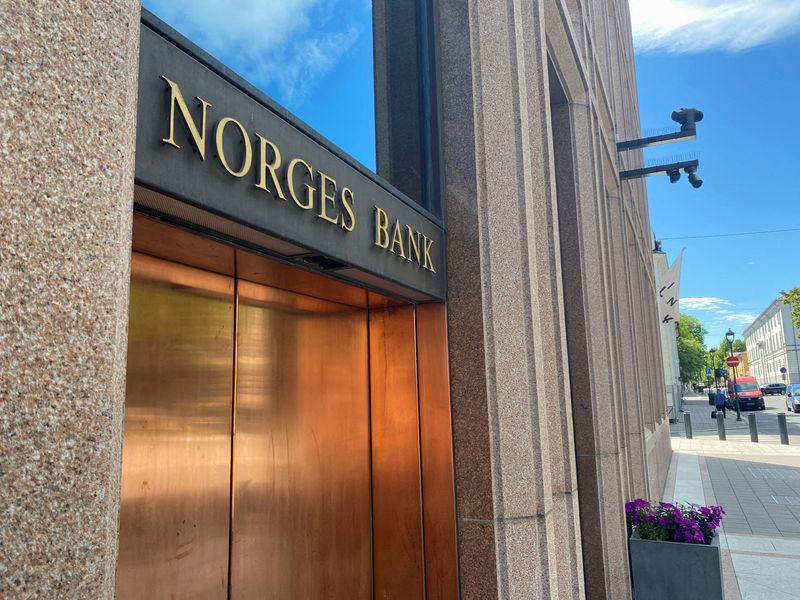By Terje Solsvik and Gwladys Fouche
OSLO (Reuters) -Norway's central bank held its policy interest rate unchanged at a 16-year high of 4.50% on Thursday, as unanimously expected by analysts in a Reuters poll and reiterated that it will stay on hold until the end of the year.
"The committee judges that a restrictive monetary policy is still needed to bring inflation down to target within a reasonable time horizon," the central bank said in a statement.
The Norwegian monetary policy contrasts with that of other Western central banks, most of which have begun cutting rates this year.
The Swedish central bank earlier on Thursday cut rates by 50 basis points, as expected, and said that, if the economic and inflation outlooks remain the same, it may also cut the rate in December and in the first half of 2025.
The Federal Reserve, the Bank of England and the Czech National Bank are also expected to announce rate cuts later on Thursday.
Norges Bank, meanwhile, said the outlook for the Norwegian economy did not appear to have changed materially since September, when it forecast that rates would start to decline in the first quarter of 2025.
"If the economy evolves as currently envisaged, the policy rate will be held at today's level to the end of the year," Norges Bank Governor Ida Wolden Bache told a press conference.
"The committee will have received more information about developments ahead of its next monetary policy meeting in December, when new forecasts will be presented," Norges Bank said in a statement.
The Norwegian crown strengthened to 11.79 against the euro at 1040 GMT, from 11.81 just before the announcement.
While Norges Bank remains likely to cut rates in March of 2025, this is by no means a certainty, Handelsbanken Markets said.
"Recent market developments suggest there is a risk that even March could be too early," the brokerage said in a note to clients.
Inflation has been slightly lower than expected since September but the Norwegian currency has also been weaker, causing potential upward pressure on consumer prices while market interest rates have risen, economists have said.

A weaker crown currency makes imports more expensive while a stronger one can help dampen inflation.
The Nordic country's core inflation eased in September to 3.1% year-on-year, continuing a decline from a peak of 7.0% in June 2023 but still above the central bank's official 2.0% target.